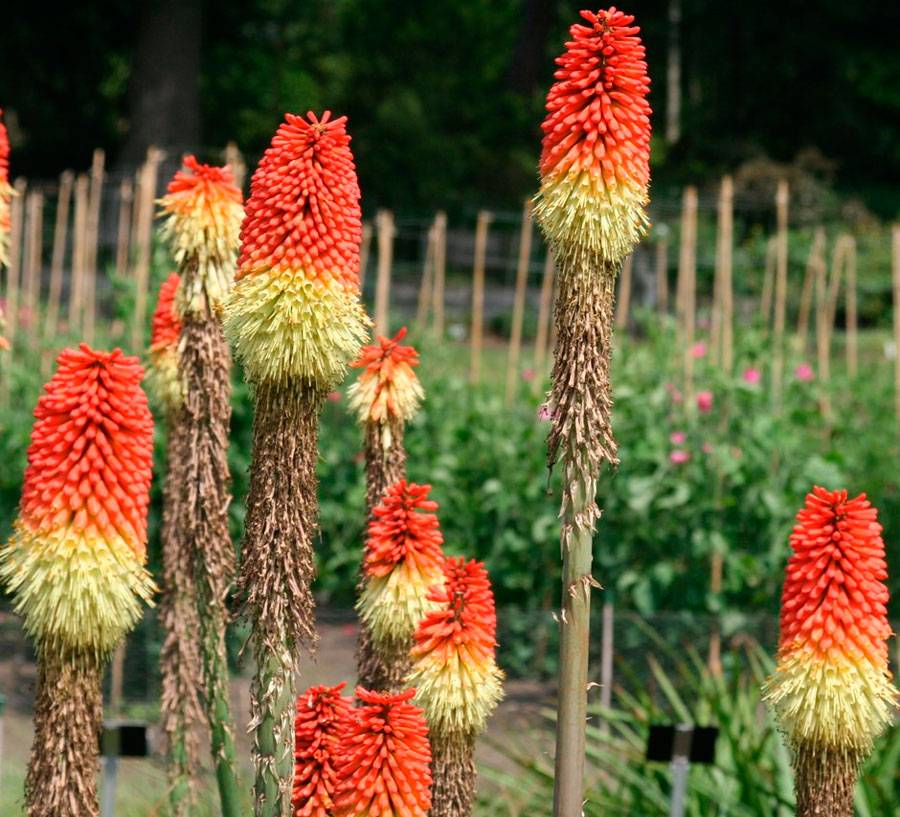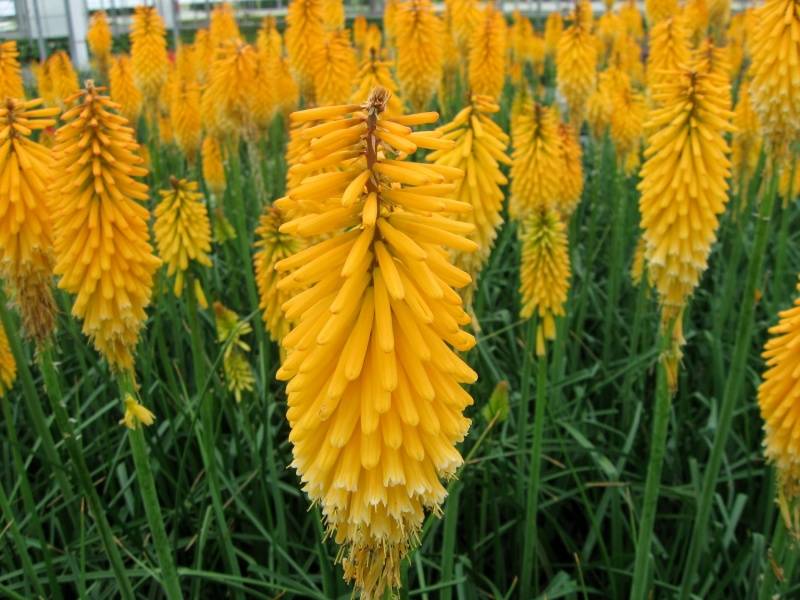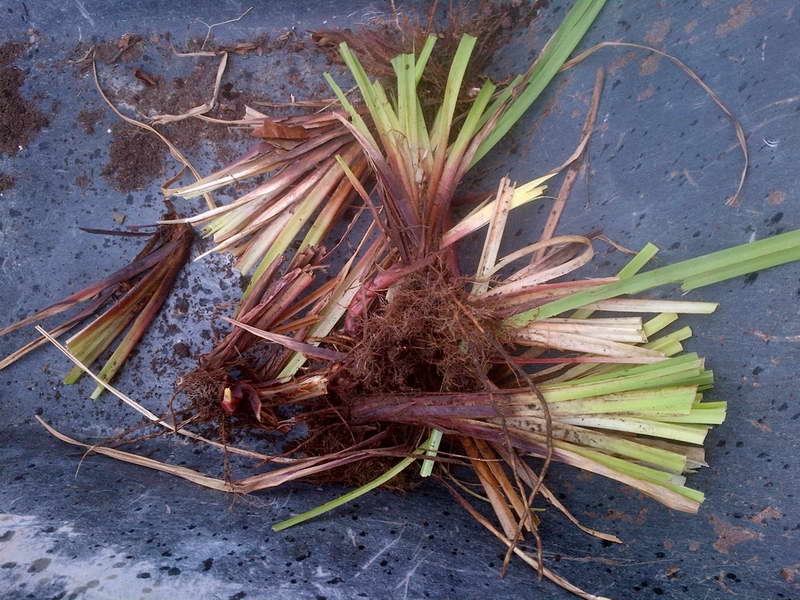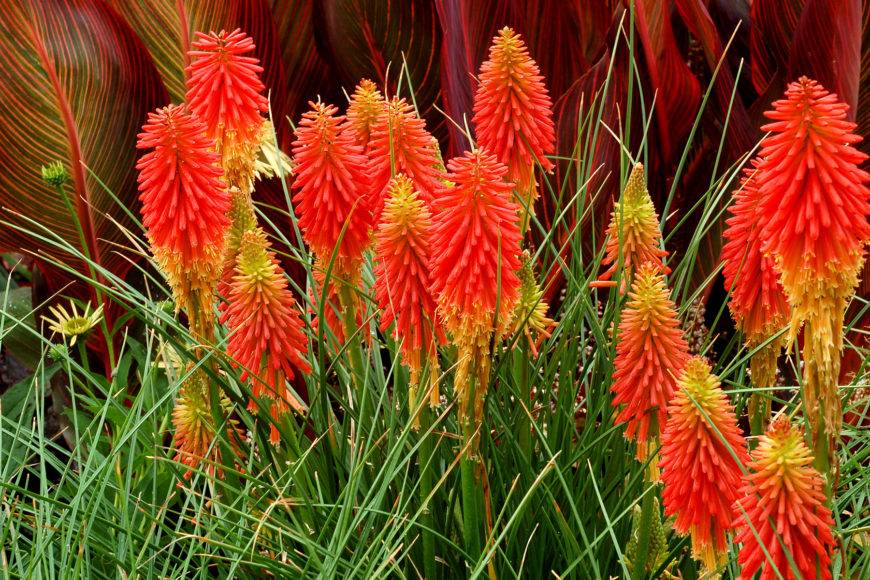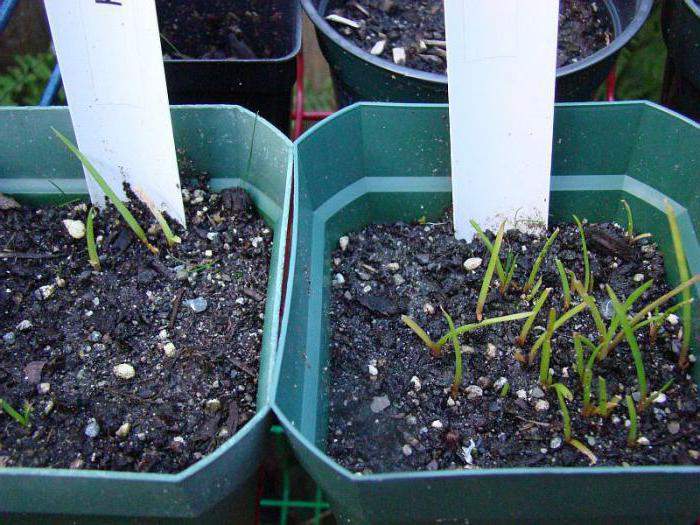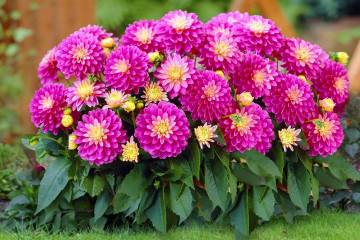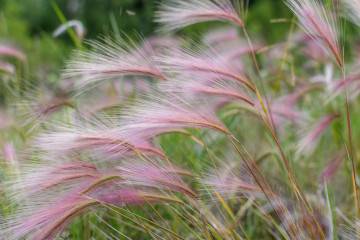Knifofiya - planting and care in the open field
Content:
Knifofia is an exotic plant native to Africa that has conquered many gardeners. This spectacular and unusual flower looks good both in a single composition and in combination with other plants. In any case, it is important to know and follow the rules of care and planting of knifofia.
Botanical description of the plant
Knifofia (lat.Kniphofia) is a perennial herb that belongs to the Xanthorrhea family and the Asphodelica subfamily. Under natural conditions, it grows in southern and eastern Africa. Moreover, it occurs at an altitude of up to 4 km above sea level.
The description of the knifofia plant boils down to the fact that it is a perennial and evergreen flower that grows up to 90 cm in height. It has leathery leaves of a xiphoid shape and a gray-green color. The leaf plates are collected in a basal rosette, in the center of which a bare thick peduncle stem grows. Its height can reach up to 1.5-3 m in length, depending on the variety. At its top, small flowers bloom, collected in sultan-shaped or spike-shaped inflorescences.
Flower buds can be opened from top to bottom as well as from bottom to top. Each flower has the shape of a bell, inside which a corolla-shaped perianth grows. The flower buds are painted in a deep red color, but during blooming they change to orange and even yellow. This characteristic of the plant gives the flower the appearance of a multi-colored cone.
Description of species
A small number of species are cultivated in Russia and in Europe.
Kniphofia tuckii
This type of knifophy comes from South Africa. It was discovered by a scientist in 1892, after whom the variety was named. It is represented by a shrub up to 80 cm in height. The leaf plates are xiphoid and up to 40 cm long. The inflorescences grow about 15 cm in length and consist of small red and yellow flowers.
Knifofia Tukka, as it is also called, is widely popular among mid-latitude flower growers. With proper preparation for winter and organization of shelter for the winter, the plant can tolerate severe frosts.
Berry Kniphofia (Kniphofia uvaria)
In nature, the berry tritoma knifophya grows only in the Cape province. It is represented by a vigorous shrub up to 2 m high. Elongated xiphoid leaves grow about 50 cm in length. The inflorescences are large, about 25 cm. Below they contain flowers of yellow-green color, and towards the top they turn into red-coral tones.
Berry knifofia has several varieties:
- Dr. Kerr. A distinctive feature are peduncles up to 1 m long and inflorescences up to 25 cm. Blossoms mainly in lemon-yellow shades;
- Fire Flame. The average height of the bush. Flowers of a red hue;
- Eskimo. Meter bush.In the lower part of the peduncle, yellow flowers bloom, and the upper ones can be of various shades: red, scarlet, orange, coral;
- large-flowered. The bush grows up to 1.4 m in height. Inflorescences are fiery red;
- Orange Beauty. Peduncle more than 1 m in height. Flowers are rich orange hues.
Hybrid Knifofia (Kniphofia x hybrida)
Hybrid cniphophy means several varieties that were created on the basis of the berry shape.
It:
- Cardinal. Inflorescences are represented by fiery red flowers. The shrub grows up to 1.2 m in height;
- Golden Skeeper. It is characterized by large inflorescences and bright yellow flowers. Plant height is average;
- Abenzonne. Shrub of medium height. On the inflorescences, yellow flowers bloom from below, and to the top they turn into red shades;
- Indiana. Plant no more than 1 m in height. Flowers in red-orange colors;
- Prince Maurito. Medium-sized shrub with reddish-brown flowers.
Features of caring for knifofia in the garden
When choosing a knifofia plant, planting and care in the open field must meet a number of requirements. Timely watering, regular fertilization, pruning and transplanting a plant - all these procedures affect the development and flowering of a crop.
Pruning
Pruning is carried out in the first half of spring, immediately after the winter shelter is eliminated. Frozen and yellowed parts of the plant are subject to removal. The next procedure is carried out when the knifofia has faded. At this time, all peduncles are cut off at the root.
Watering
Since the knifofia Alcazar and its other varieties are drought-resistant varieties, it is often not recommended to water them. The plant tolerates excessive moisture rather poorly, therefore, it is better to choose a place for planting even or on a hill.
Humidity
It is best to plant a perennial shrub of knifophya in a climatic zone with an average humidity level or close to dry. The spraying procedure is kept to a minimum.
Priming
It is best to grow this plant, like grandiflora, on sandy soil. Before planting, it should be thoroughly fertilized and loosened. A hole for the plant is dug out based on the size of the knifophy itself.
A layer of pebbles or gravel is placed on the bottom, followed by fertile soil. Many gardeners recommend laying stones on the ground or mulching with dark materials near the planting. This procedure will attract more sunlight and heat to the flower.
Top dressing
In order to grow a healthy plant, timely feeding is very important. The first fertilization is carried out with nitrogen compounds after the first leaves appear. After 2-3 weeks, organic matter in the form of peat, compost or humus will do.
After flowering, the plant will need additional nutrition to prepare for winter. At this time, it is recommended to use wood ash or potash fertilizers.
Features of winter care
In the knifofia plant, care and cultivation depend on the climatic zone. So, in middle latitudes, a long-lived flower is able to delight with its flowering no more than 2-4 years. Moreover, in the south, its life expectancy increases significantly.
For the Middle Lane, where in winter the air temperature drops to -22-25 ° C, it is especially important to prepare for the upcoming frost. So, immediately after flowering, all flower stalks are removed. With the onset of frost, the leaf plates are bound and covered with a thick layer of peat. Spruce branches are laid on top and waterproof material is covered.
In the spring, the entire structure is removed. Damaged and frostbitten leaves are removed.
When and how it blooms
The leaves of the cnifophya are collected in a basal rosette, in the center of which a long peduncle grows. At its end there are large inflorescences, consisting of a large number of flowers.
Flowering begins in July and can last up to 8 weeks. An interesting feature of this process is the gradual disclosure of flowers. Depending on the variety, they can begin to bloom from the bottom or from the top of the peduncle. But even at the end of flowering, the plant retains its decorative properties until the onset of winter.
Seed planting
Growing from seeds at home is extremely rare for the knifofia plant. This is due to the fact that self-collection of planting material is not possible. All plants grown for ornamental purposes have lost their maternal abilities, so the seeds can only be used from specialized stores.
The sowing procedure is roughly the beginning of March. For this, a nutritious and loose soil is preliminarily prepared. You can purchase a ready-made formula intended for flowering plants.
The seeds are sown in containers in which shallow grooves are made. If the container is covered with a film, it is necessary to remove it every 2-3 days to air the planting. The soil is moistened with a spray gun as the top layer dries.
After 7-10 days, the first shoots appear. When two adult leaves are formed on the sprouts, they are picked in separate pots. In the second half of spring, plants are transplanted into open ground.
Vegetative breeding method
The knifofia flower can be propagated by dividing. When an adult bush reaches 3 years of age, daughter rosettes are formed on it. They are taken as planting material. The best time to divide them is the end of spring. All available cuts are processed with wood ash. Separated rosettes are planted in pre-prepared holes after 3-4 hours.
In the first few weeks, the seedlings are watered abundantly with settled water, after which the procedure is reduced to 1-2 times a week.
Possible problems in the cultivation of knifophy
If you take proper care of the plant, it will not be susceptible to disease. Errors in care make the cniphophia susceptible to many diseases. So, excessive systematic watering can lead to the formation of root rot. If at the initial stage it is possible to use fungicides, then in a neglected state the only way out is to remove the plant from the garden.
As for insect pests, knifofia can be attacked by:
- spider mite;
- aphid;
- thrips and other leaf-eating and sucking insects.
The knifofia flower is a desirable plant for many gardeners. With proper care, it grows into a veritable garden decoration and becomes a part of modern landscaping.

